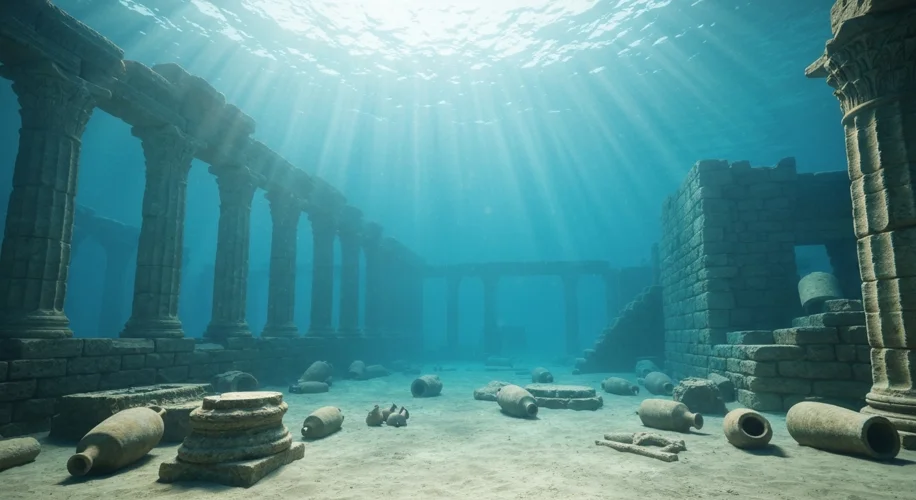The Mediterranean Sea, a cradle of civilizations, holds secrets untold, and none more evocative than the submerged remnants of Heracleion, a once-grand city lost to the annals of time and the embrace of the sea. For centuries, this port city, a vital hub connecting Egypt to the wider Roman world, lay hidden beneath the waves off the coast of Abu Qir, a silent testament to the ebb and flow of empires.
Imagine the bustling quays of Heracleion, a city that predates even Alexandria, its temples reaching towards the Egyptian sun. This was a place where the divine met the mundane, where merchants from distant lands traded spices and silks, and where the very waters that now conceal it once lapped at its shores, carrying ships laden with the bounty of the Roman Empire.

The rediscovery of Heracleion, a feat orchestrated by the pioneering work of marine archaeologist Franck Goddio and his team in the early 2000s, was akin to pulling a lost chapter from history’s very pages. Through meticulous sonar mapping and daring dives, the team brought to light the sprawling metropolis that had been swallowed by a combination of earthquakes and tsunamis centuries ago. What emerged from the murky depths was not just scattered debris, but the tangible architecture of a forgotten era.
The unearthed treasures speak volumes about life during the Roman occupation of Egypt. Temples dedicated to ancient Egyptian deities, alongside structures bearing Roman architectural influences, highlight the cultural synthesis that characterized this period. The discovery of colossal statues, intricate gold jewelry, and countless amphorae paint a vivid picture of the city’s wealth and its inhabitants’ daily lives. Particularly striking are the remnants of the city’s sophisticated water systems and its substantial quays, indicating a thriving port that facilitated trade and cultural exchange.
Life in Roman Egypt was a complex tapestry woven from ancient traditions and new influences. Heracleion, as a major port, would have been a melting pot of cultures. Roman soldiers, Egyptian priests, Greek merchants, and countless others would have walked its streets. The city’s submersion, estimated to have occurred gradually over several centuries following natural disasters around the 8th century AD, preserved it in a unique time capsule, offering unparalleled insights into a world that could otherwise only be imagined.
The impact of discovering Heracleion resonates deeply within the fields of archaeology and history. It provides concrete evidence of a city whose existence was largely relegated to myth and ancient texts, like those of the Greek historian Diodorus Siculus. The artifacts recovered offer invaluable data for understanding Roman trade routes, religious practices, and urban planning in Egypt. The sheer scale of the ruins underscores the importance of Heracleion as a preeminent Egyptian port before the rise of Alexandria.
Unearthing Heracleion is more than just an archaeological triumph; it’s a profound connection to our collective past. It reminds us that beneath the surface of the familiar, there are still worlds waiting to be discovered, stories waiting to be told, and echoes of ancient lives that continue to whisper from the depths.

